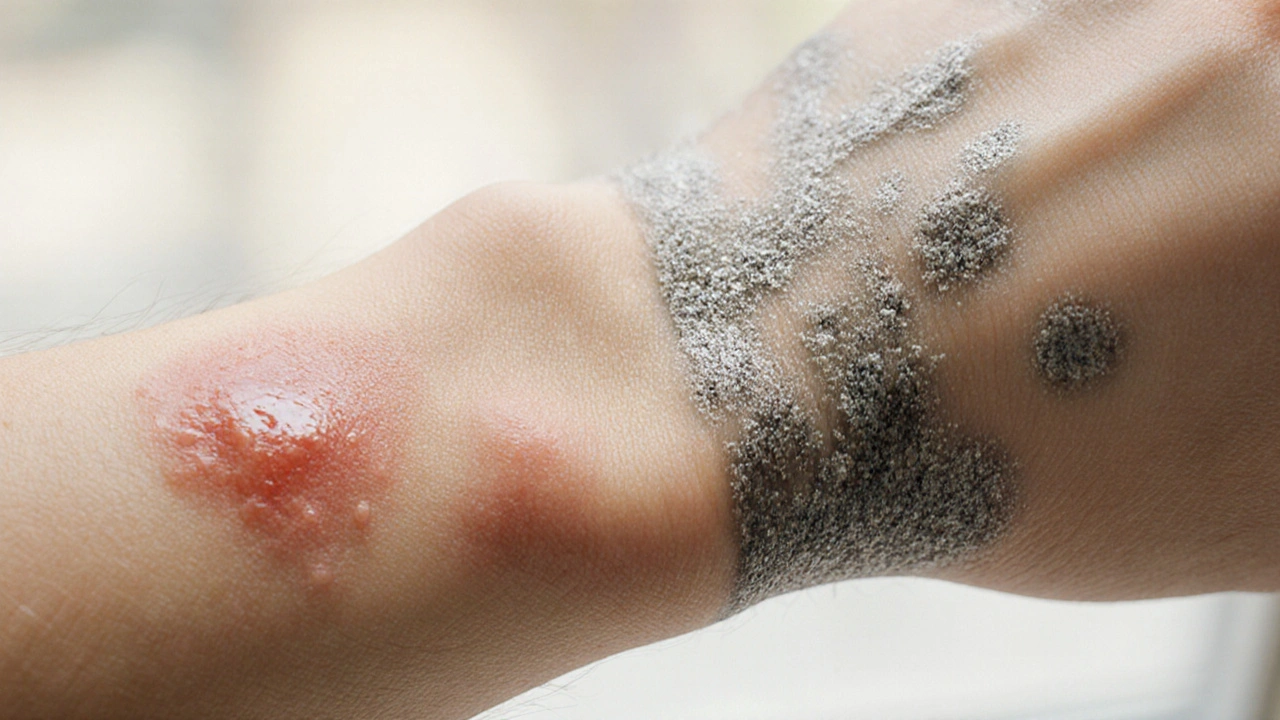Skin Rash vs Skin Disorder: Quick Differences and What to Do
Seeing a red patch on your arm can be annoying, but is it just a rash or something more serious? Many people mix the two terms, but the difference matters when you decide whether to treat it at home or visit a doctor. Below we break down the basics, point out red flags, and give you easy steps to handle common skin issues.
What Is a Skin Rash?
A rash is usually a short‑term reaction that shows up as redness, itching, bumps, or swelling. Most rashes are triggered by something external – a new soap, a bite, an allergy, or a mild infection. They often appear suddenly, stay flat or raised for a few days, and then fade on their own or with simple over‑the‑counter creams.
Typical rash signs include:
- Itchy or burning feeling
- Red or pink patches
- Small blisters or hives
- Patchy skin that may spread quickly
Because rashes are usually harmless, many people treat them with moisturizing lotions, hydrocortisone cream, or an antihistamine. If the rash improves within a week, it was likely a simple irritation.
When a Rash Becomes a Disorder
A skin disorder is a broader term for any condition that changes the skin’s normal appearance or function over a longer period. Disorders can be chronic (like eczema or psoriasis) or involve deeper problems such as infections, autoimmune reactions, or genetic issues. Unlike a rash, a disorder often needs professional diagnosis and a treatment plan that may include prescription medication.
Key signs that a rash might be part of a disorder include:
- Symptoms lasting more than two weeks
- Repeating episodes in the same spot
- Scaling, thickening, or cracking skin
- Pain, fever, or swelling that spreads
- Accompanying signs like joint pain or fatigue
If you notice any of these, it’s a good idea to schedule a visit with a dermatologist or primary‑care doctor. Early diagnosis can prevent a condition from getting worse and can guide you to the right treatment.
Here are a few common skin disorders that often start with a rash:
- Eczema (atopic dermatitis): itchy, red patches that become thick and scaly.
- Psoriasis: raised, silvery plaques that may bleed when scratched.
- Contact dermatitis: a rash that sticks around after exposure to an irritant.
- Rosacea: facial redness that flares with heat or spicy foods.
Understanding whether you’re dealing with a one‑off rash or an ongoing disorder helps you choose the right help. Simple steps you can take right now include:
- Stop using any new skin product that might be the cause.
- Keep the area clean and dry; avoid scratching.
- Apply a fragrance‑free moisturizer or low‑dose hydrocortisone.
- Take an oral antihistamine if itching is intense.
- Watch the spot for a week – if it improves, you probably had a rash.
- If it doesn’t improve, spreads, or brings other symptoms, call a doctor.
Remember, your skin is a protective barrier, so treating it right matters for overall health. Knowing the difference between a rash and a disorder empowers you to act fast, avoid unnecessary worry, and get the right care when you need it.
How to Tell If a Skin Rash Is Actually a Disorder
Learn how to tell a short‑lived skin rash from a chronic skin disorder with easy signs, a comparison table, and practical steps for home care or professional help.
